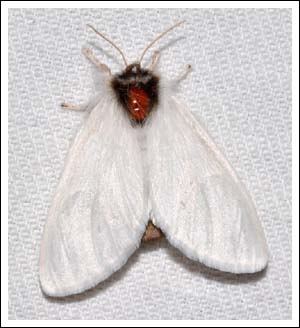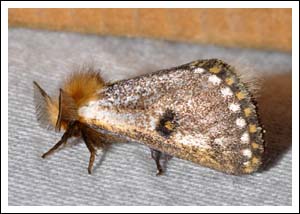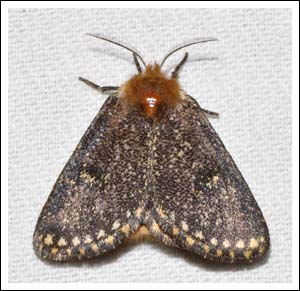This family has two subfamilies, Thaumetopoeinae, and Notodontinae. the Epicomas recently featured belong to the former family and this post will cover the remaining members photographed locally. The larvae of the Thaumetopoeinae moths are very hairy, and contact with the hairs can cause severe skin rashes, and in the case of the Processionary Moth, Ochrogaster lunifer, have been known to cause a very serious case of paediatric osteomyelitis. The toxic filaments in that case came from not from a larva but from an adult moth, so be warned!
Sparshall’s Moth, Trichiocercus sparshalli has spectacular larvae, this was an early photograph of some that were sheltering behind a flake of bark, they are eucalypt grazers.
The adult moths are quite plain although the male is showy.
Female.
Male.
The Patterned Notodontid, Aglaosoma variegata is by way of contrast quite beautiful. These are both males, with one flying up the sheet showing the hind wings and colourful body. The larvae are known to feed on acacia and banksia species.
And now the Processionary Moth, Ochrogaster lunifer. The genus Ochrogaster is believed to contain a number of species throughout Australia, the Victorian specimens are at present included under the species name lunifer. (MOV 2) It is variable in colour and pattern but the ones photographed locally all conform to the same general appearance.
Larval food plants include acacias.
The next post will feature local moths in the subfamily Notodontinae.
Click images to enlarge.
References and further reading.
Moths of Victoria Volume 2, second edition,
A Field Guide to Australian Moths.


















